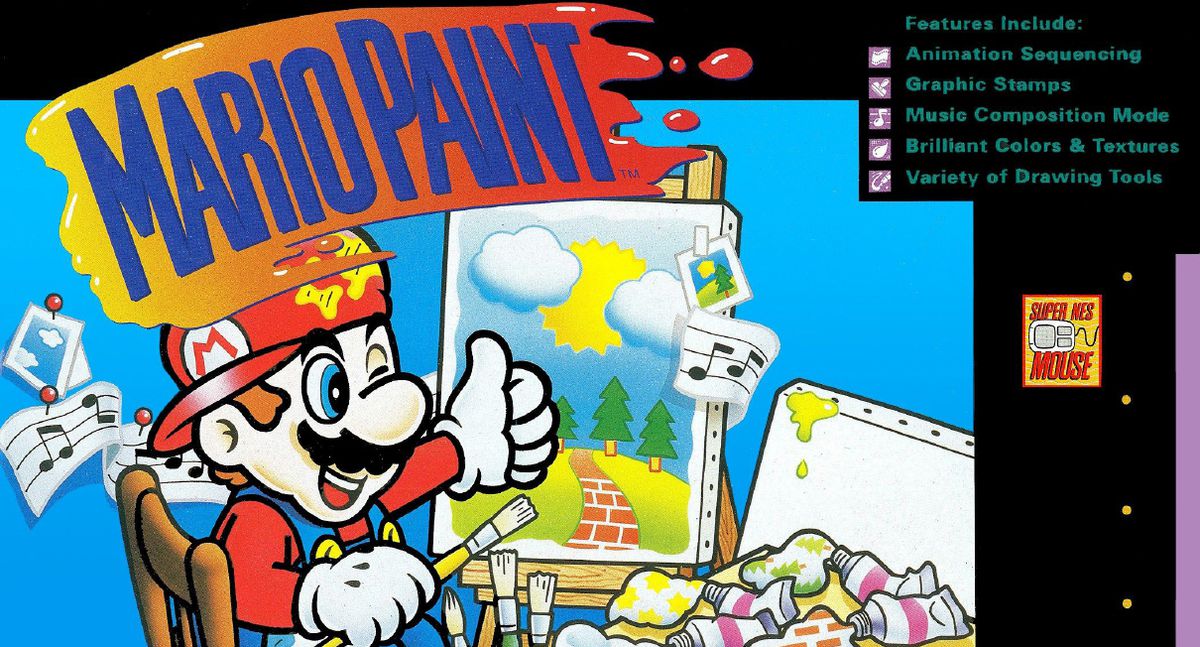Artists can draw creative ideas from anywhere. Whether it’s on a canvas, on the tablet, or making costumes, the idea of art is universal and anyone can do it. Sometimes, we often ask ourselves, “Is this art?” In recent times, just the concept of nothingness has even been considered art. In 2003, a New York art gallery gave each visitor a blue LED flashlight, just to enter a dark room with nothing inside of it but the visitors and the blue LED flashlight. This has led to people questioning what limits there are to creativity, or if no limits even exist at all.
Art-based games existed as early as 1982, such as Alien Garden for the Atari 8-bit. The following year, Moondust came out for the Commodore 64 and is often considered a precursor to Microsoft Paint. Microsoft Paint is not considered an art game, but is one of the most commonly cited examples of art software. In 1985, an entire console called the LJN Video Art was released specifically for art. The console bombed because it suffered from major technical flaws such as twin-lead connectors with metal fork-shaped prongs that required screwing the connectors into the TV. The metal fork-shaped prongs were a very common feature of older TVs. To add to the annoyance of the setup, the controller for the LJN Video Art was way too stiff and confusing, requiring players slash artists to hold down the button and move a joystick to draw. The console garnered little attention because no one knew how many units were sold or even how many units existed. However, YouTube reviewer James Rolfe a.k.a Angry Video Game Nerd reviewed it in 2014.
By the early 1990s, art was beginning to enter the video game sphere. Mario Paint was one of the most revolutionary creative games ever made. It had basic drawing abilities and even allowed players to create custom stamps pixel-by-pixel, making it one of the most in-depth creative tools ever to be released, even to this very day. Players could not only draw pictures; they could even make music. You can find a lot of Mario Paint music on YouTube today, with players creating Mario Paint versions of popular songs such as Queen’s Bohemian Rhapsody. Didn’t like what you made? There were just as awesome eraser animations. Mario Paint was unique in that the game came with the Super NES Mouse. The mouse could be used for many other games on the Super Nintendo, but was generally intended to be used with Mario Paint.
There has been no real successor to Mario Paint. A similar game was in development for the Nintendo 64 as a sequel to the wildly successful art game. The game never came and was ultimately was released for the 64DD in 1999. The game Mario Artist: Paint Studio was released only in Japan. Fans in North America and around the world still hold Mario Paint in extremely high regard as one of the first games to incorporate the idea of creativity into a video game. Today, players creating mods for the thousands of PC games out there today may have gotten their start in a game such as Mario Paint.
The game’s true successor (in my opinion) is Super Mario Maker, which was released in 2015 for the
Wii U and Nintendo DS. This game allowed players to create their own levels from the Super Mario series and allowed players to upload them to the Internet for other players to play. This game may have not been directly influenced by Mario Paint, but the creative factor of the game definitely has Nintendo fans nostalgic, as the game allows you to create levels in the style of classic games such as Super Mario Bros., Super Mario Bros. 3, and Super Mario World. Over 25 years later, creatives are still looking for a new Mario Paint game. The Nintendo Switch has the art game Qbics Paint, which was released in 2017, but sadly, it has none of the Mario-related content that the original game had.
Also published in GADGETS MAGAZINE July 2018 Issue.
Words by Jose Alvarez
